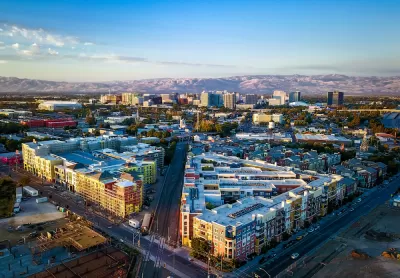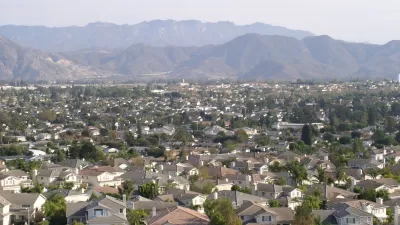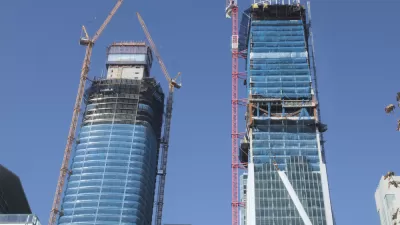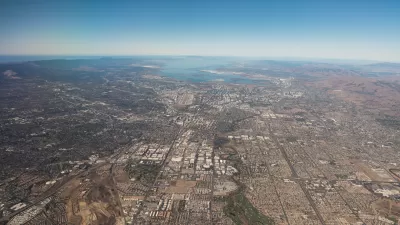A $450 million bond referendum will come before San Jose voters this November. Mayor Sam Liccardo promises it is "a necessary but not sufficient tool" to provide stable housing at an epicenter of the housing crisis.

Following the 2016 approval of a $950 million bond to address the housing crisis in Santa Clara County, the voters of San Jose will be asked to approve another $450 million this year. The bond will direct money "to affordable housing production and preservation at three different income levels, promising to create up to 3,550 units of new affordable housing in the city," Jared Brey writes.
San Jose's mayor Sam Liccardo characterizes the bond as "a necessary but not sufficient tool" to deal with the city's severe lack of affordable housing options. "Last October, Liccardo released a 15-point housing plan with the goal of creating 25,000 new homes in San Jose over the next five years, of which 10,000 would be affordable units." The bond is estimated to cost San Jose property owners 8 cents per $1,000 of assessed value, and will require approval by two thirds of voters.
The city is also working to create a separate fund to attract low-return, safe investments in housing for the middle class, a so-called "missing middle" fund. Such an instrument would pair private and philanthropic investment with a small subsidy from the city, but so far no outside money has been committed.
FULL STORY: The ‘Capital of Silicon Valley’ Wants to Borrow $450 Million for Housing

Trump Administration Could Effectively End Housing Voucher Program
Federal officials are eyeing major cuts to the Section 8 program that helps millions of low-income households pay rent.

Planetizen Federal Action Tracker
A weekly monitor of how Trump’s orders and actions are impacting planners and planning in America.

The 120 Year Old Tiny Home Villages That Sheltered San Francisco’s Earthquake Refugees
More than a century ago, San Francisco mobilized to house thousands of residents displaced by the 1906 earthquake. Could their strategy offer a model for the present?

HSR Reaches Key Settlement in Northern California City
The state’s high-speed rail authority reached an agreement with Millbrae, a key city on the train’s proposed route to San Francisco.

Washington State Legislature Passes Parking Reform Bill
A bill that would limit parking requirements for new developments is headed to the governor’s desk.

Missouri Law Would Ban Protections for Housing Voucher Users
A state law seeks to overturn source-of-income discrimination bans passed by several Missouri cities.
Urban Design for Planners 1: Software Tools
This six-course series explores essential urban design concepts using open source software and equips planners with the tools they need to participate fully in the urban design process.
Planning for Universal Design
Learn the tools for implementing Universal Design in planning regulations.
Ada County Highway District
Clanton & Associates, Inc.
Jessamine County Fiscal Court
Institute for Housing and Urban Development Studies (IHS)
City of Grandview
Harvard GSD Executive Education
Toledo-Lucas County Plan Commissions
Salt Lake City
NYU Wagner Graduate School of Public Service





























